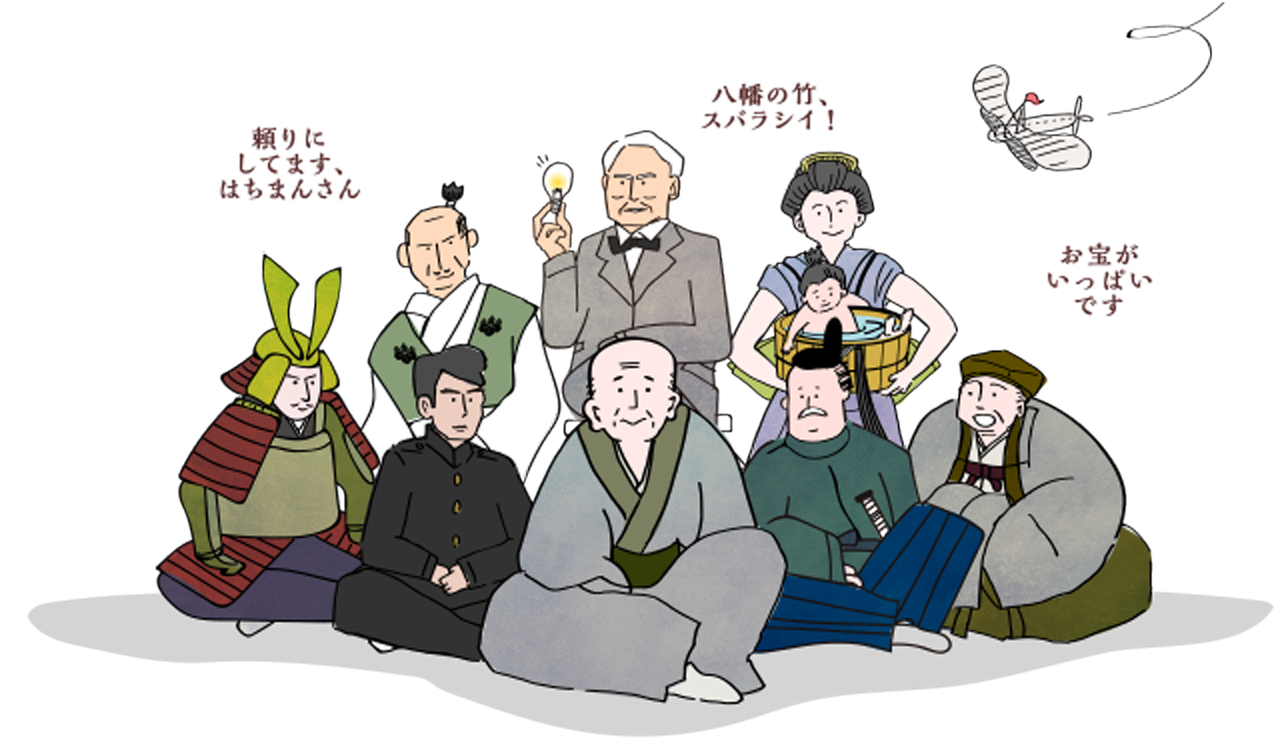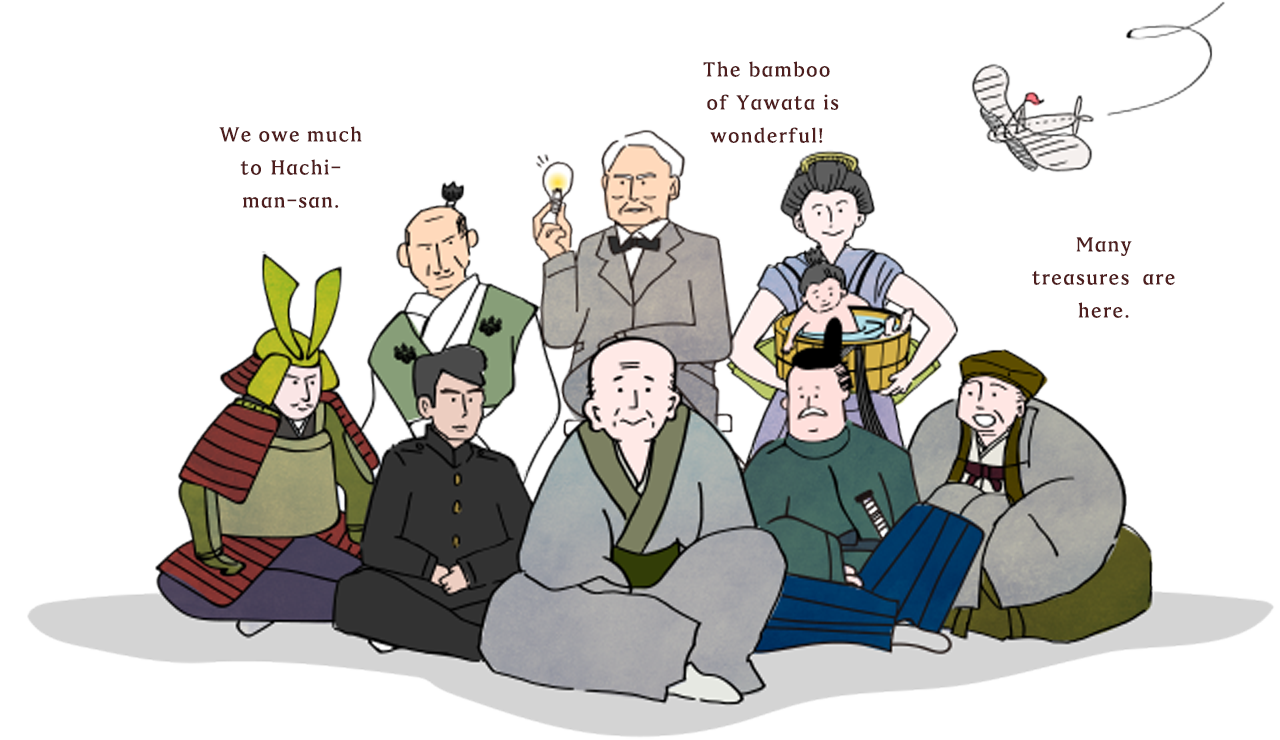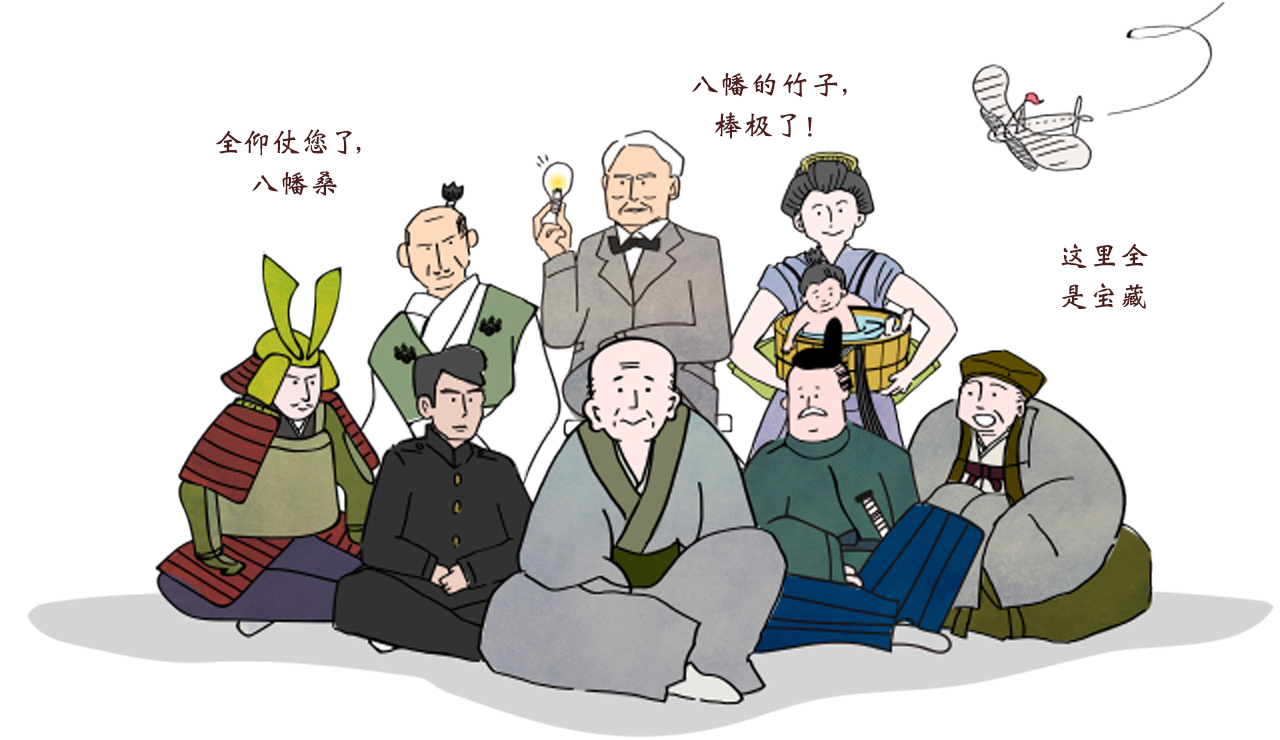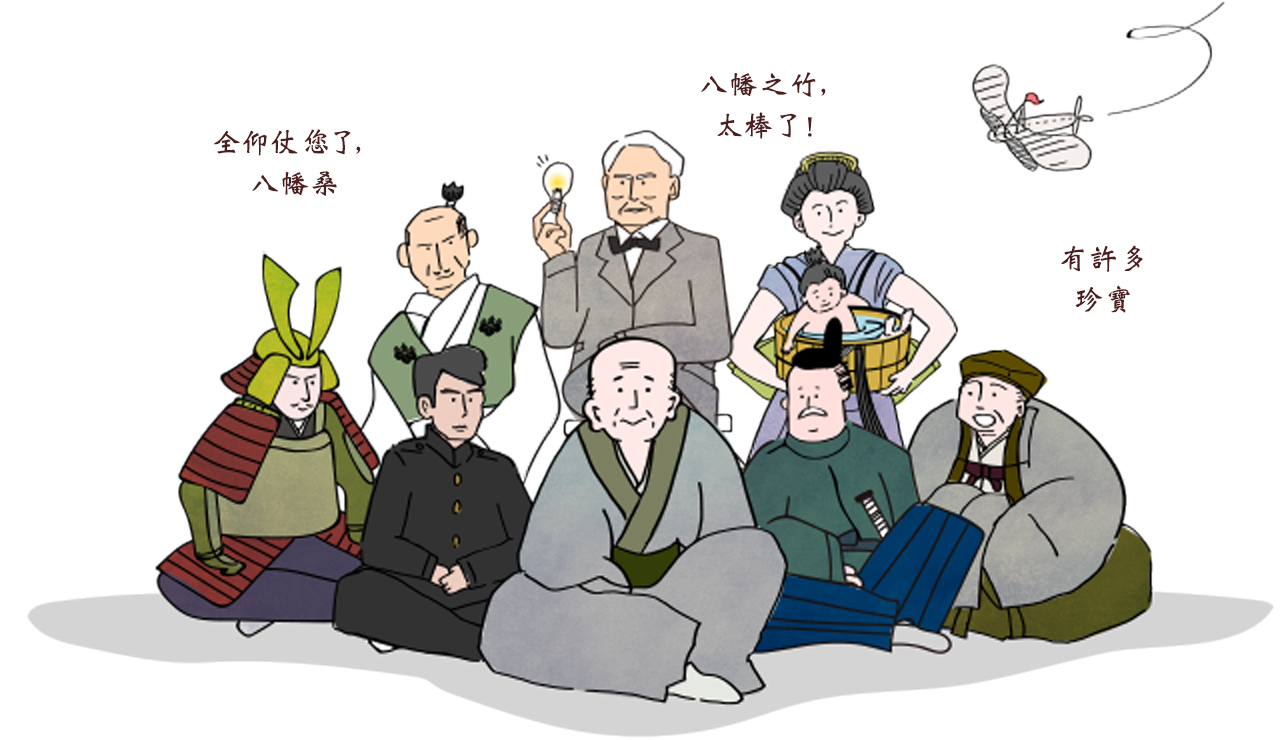-
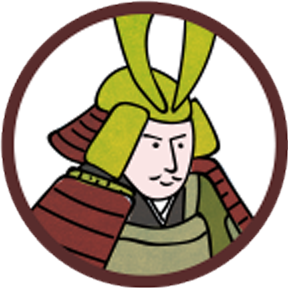
Hachiman-taro Yoshiie (1039 - 1106)
-
I took the name Hachiman-taro after the deity of military arts.
Minamoto-no-Yoshiie was a warlord in the late Heian period. Known as an ideal samurai who excelled in both literary and military arts, he celebrated his coming of age at Iwashimizu Hachimangu, and assumed the name Hachiman-taro. Minamoto-no-Yoritomo, one of his descendants, founded the Kamakura shogunate, and pioneered the era of samurai rule, which lasted to the Edo period.
Check the related story. 01 | Hachiman-san
-
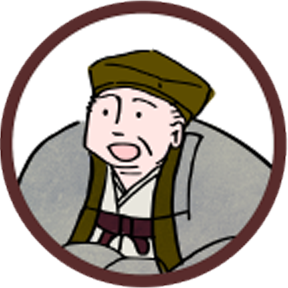
Yoshida Kenko (1283 - 1350)
-
I wrote the essay Tsurezuregusa.
Yoshida Kenko was a poet and essayist from the late Kamakura period to the period of the Northern and Southern Courts. Episode 52 of his masterpiece essay Tsurezuregusa mentions Iwashimizu Hachimangu; it is an episode about a Buddhist priest who failed to visit Iwashimizu Hachimangu Shrine as his intended destination because he was satisfied only to see the crowded shrine town. The edifying episode concludes that a guide is desirable for everything.
Check the related story. 02 | Shrine Town
-
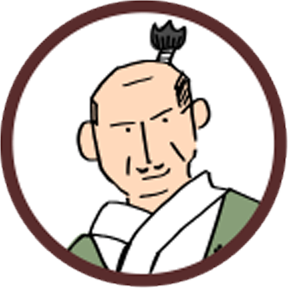
Oda Nobunaga (1534 - 1582)
-
I repaired Hachimangu Shrine.
Oda Nobunaga was a warlord in the Warring States period. After he heard at Hoshaku-ji Temple in Yamazaki that gutters at Iwashimizu Hachimangu Shrine had worn away, he ordered that the shrine be repaired on a large scale. A huge golden gutter about 22 m in length, about 60 cm wide, and 3 cm thick, and earthen walls, all of which he donated then, still remain at Hachimangu Shrine.
Check the related story. 01 | Hachiman-san
-
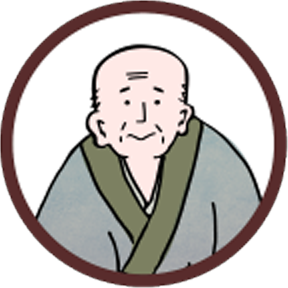
Shokado Shojo (1582[84] - 1639)
-
I love art and the tea ceremony.
Shokado Shojo was a high priest at Iwashimizu Hachimangu Shrine in the early Edo period. He was such an excellent calligrapher that he was counted among the “three greatest calligraphers of the Kan’ei era, and taught the shogun. He also loved tea ceremony passionately, and the set of tea utensils he possessed, called “Yawata Meibutsu” (masterpieces in Yawata), is still renowned. He built deep friendships with many people of culture.
Check the related story. 03 | Tea Culture 04 | Shokado Bento
-
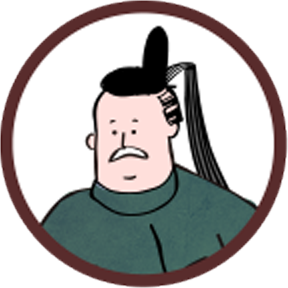
Kobori Enshu (1579 - 1647)
-
I built a tea hut in the air.
Kobori Enshu was a samurai, tea master, architect, and garden designer in the early Edo period. He was a close friend of Shokado Shojo. It is said that Enshu and Shojo cooperated in building a tea hut named Kan’unken at Takimoto-bo Temple, where Shojo served as the chief priest, in the orbit of Iwashimizu Hachimangu Shrine. Kan’unken was uniquely structured as a kind of “tea hut in the air,” standing on pillars roughly seven meters high on a steep slope.
Check the related story. 03 | Tea Culture
-
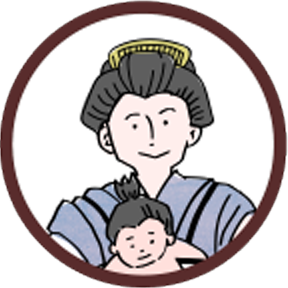
Okame-no-kata (? - 1642)
-
I helped continue the kin relationship of the Tokugawa family.
Okame-no-kata was an early Edo-period woman from the Shobo-ji Shimizu family, which produced generations of priests at Iwashimizu Hachimangu. She became a concubine of Tokugawa Ieyasu, and gave birth to Tokugawa Yoshinao, the first lord of the Owari Domain. She donated money to construct the Main Hall, Karamon gate, Hojo chamber, Shoin building, etc. at Shobo-ji Temple. It is said that she also helped grant Yawata various privileges, such as exemptions from land surveys.
Check the related story. 02 | Shrine Town
-
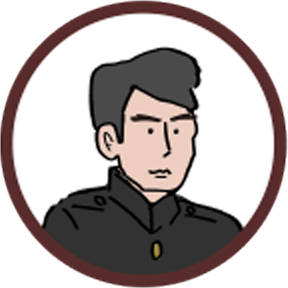
Ninomiya Chuhachi (1866 - 1936)
-
I established the world’s first principle of aviation.
Ninomiya Chuhachi was an inventor from the Meiji to Taisho eras. Inspired by birds gliding in the air, he was the first to succeed in flying a crow-type airplane powered by a rubber band. He gave up continuing his research after he knew that the Wright Brothers had succeeded in the first manned flight in 1903. He established Hiko-jinja Shrine with the hope of ensuring safety in aviation.
Check the related story. 05 | Three Rivers
-
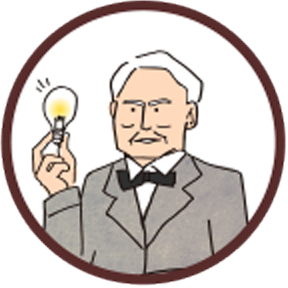
Thomas Alva Edison (1847 - 1931)
-
The bamboo of Yawata shines light to the world.
Thomas Alva Edison was the world-famous, U.S.-born “king of inventors.” In the process of developing incandescent light bulbs for practical use, for use as filaments he chose only Yawata-grown bamboo from among bamboos collected around the world. Bulbs with filaments made of Yawata-grown bamboo continued to shine light for over 1,200 hours, so the bamboo was used as material for filaments for more than 10 years.
Check the related story. 02 | Shrine Town






